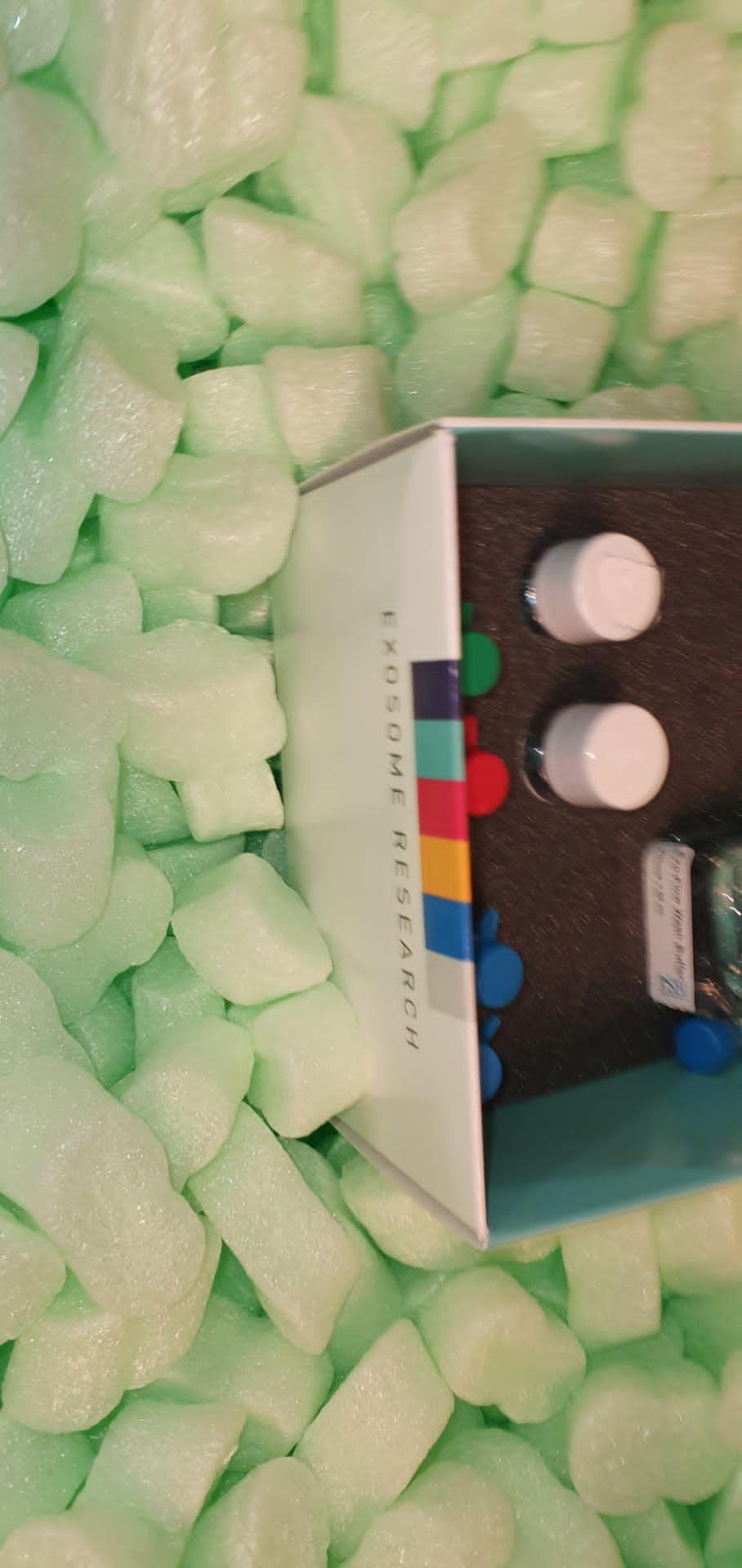W środowisku morskim bakterie z osadów przyujściowych i przybrzeżnych są jednymi z pierwszych celów zanieczyszczenia nanocząsteczkami; dlatego istotne jest poszerzenie wiedzy na temat interakcji między bakteriami a nanocząsteczkami. W pracy oceniono odpowiedź bakterii morskiej Pseudomonas fluorescens BA3SM1 na nanokryształy CdSe (CdSe NPs) o średnicy 3 nm (NP3) i 8 nm (NP8) za pomocą metod mikroskopowych, fizjologicznych, biochemicznych i proteomicznych. Obrazy z transmisyjnej mikroskopii elektronowej wykazały, że NP3 były w stanie penetrować bakterie, podczas gdy NP8 były silnie skoncentrowane wokół komórek, osadzone w dużych egzopolisacharydach.
W naszych warunkach eksperymentalnych oba rozmiary CdSe NP wywoływały spadek oddychania podczas stacjonarnej fazy wzrostu, podczas gdy tylko NP8 powodował opóźnienie wzrostu i zmniejszenie produkcji pyowerdyny. Analizy proteomiczne wykazały, że szczep zareagował na toksyczność CdSe NP, wywołując różne mechanizmy obronne, takie jak agregacja komórek, sekwestracja zewnątrzkomórkowa CdSe NP, skuteczna ochrona przed stresem oksydacyjnym, modyfikacje organizacji i właściwości otoczki oraz eksport kadmu. Ponadto BA3SM1 wykazywał zdolność biosorpcji 1,6 x 10 (16) NP3 / g suchej masy i 1,7 x 10 (15) NP8 / g suchej masy.
Zgodnie z naszą najlepszą wiedzą jest to pierwszy raport skupiający się na wpływie koloidalnych nanokryształów CdSe (CdSe NP) na morski szczep Pseudomonas fluorescens. CdSe NP są szeroko stosowane w przemyśle energii odnawialnej i niestety oczekuje się, że te zanieczyszczenia wkrótce pojawią się w środowisku morskim poprzez spływy powierzchniowe, ścieki miejskie i rzeki. Dlatego szczep ten wydaje się być obiecującym czynnikiem w procesach bioremediacji NP. Dane proteomiczne są dostępne za pośrednictwem ProteomeXchange z identyfikatorem PXD004012.
Zwiększenie tempa metabolizmu pomimo spadku masy ciała u dorosłej osy parazytoidalnej.
Tempo metabolizmu jest pozytywną funkcją masy ciała, regułą obowiązującą dla większości organizmów i podstawą kilku teorii ekologii metabolicznej. Jednak w przypadku owadów dorosłych różnorodność zależności między masą ciała a oddychaniem pozostaje niewyjaśniona. Celem pracy jest powiązanie metabolizmu oddechowego pasożyta z masą ciała i aktywnością żerowania. Porównaliśmy tempo metabolizmu grup samic pasożyta Eupelmus vuilleti, które głodują i żywią się żywicielem, zarejestrowane za pomocą respirometrii przez 7 dni, co odpowiada średniemu okresowi życia głodujących samic i ponad połowie życia żerujących samic. Dynamikę węglowodanów, lipidów i białek w organizmie żerujących samic określono ilościowo za pomocą technik biochemicznych.
Masa ciała i wszystkie składniki odżywcze ciała gwałtownie spadły od pierwszego dnia. Z kolei wytwarzany CO2 i zużyty O2 stale wzrastały. Głodujące samice wykazywały odwrotną tendencję, identyfikując żerowanie jako przyczynę przyspieszenia oddychania samic. Dwa uzupełniające się procesy fizjologiczne wyjaśniają nieoczekiwany związek między zwiększeniem tempa metabolizmu a spadkiem masy ciała. Po pierwsze, hemolimfa gospodarza jest wysoce niezrównoważonym pożywieniem, a nadmiar składników odżywczych (białka i węglowodany) należy usunąć, częściowo przez wydalanie, a częściowo przez oddychanie.
Po drugie, żerująca młoda samica produkuje jaja w coraz większym tempie w pierwszej połowie swojego życia, co również zwiększa oddychanie. Zakładamy, że zmienny w czasie udział tempa metabolizmu w procesach karmienia i reprodukcji uzupełnia udział masy strukturalnej i prowadzi do obserwowanego trendu. Rozszerzamy nasze wyjaśnienia na inne grupy owadów i omawiamy potencjał zjednoczenia przy użyciu teorii dynamicznego budżetu energetycznego.
Przypuszczalnie zidentyfikowane rodzaje obejmują Arthrobacter, Brevibacterium, Bacillus, Cornyebacterium, Actinomyces, Aureobacterium, Chromobacterium i Mycobacterium. Pseudomonas spp. nie zostały odzyskane. Pięćdziesiąt procent zgrupowanych operacyjnych jednostek taksonomicznych (OTU) nie zostało zidentyfikowanych. Trzydzieści procent skupionych OTU stanowiły nieregularne, asporogenne pałeczki Gram-dodatnie. Zbiorowiska bakteryjne różniły się w zależności od miejsca, a pożywka izolacyjna miała silny wpływ na odzyskane szczepy.
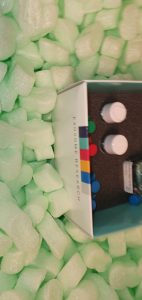
Multiscale Vibrational Spectroscopic Approach for Identification and Biochemical Characterisation of Pollen.
Analiza ziaren pyłku dostarcza cennych informacji na temat biologii, ekologii, medycyny sądowej, zmian klimatycznych, migracji owadów, źródeł pożywienia i alergenów lotnych. Spektroskopie wibracyjne (w podczerwieni i Ramana) oferują chemiczną charakterystykę pyłku poprzez identyfikowalne cechy spektralne bez jakiejkolwiek wstępnej obróbki próbki. Porównaliśmy poziom informacji chemicznych, które można uzyskać za pomocą różnych wieloskalowych technik spektroskopii oscylacyjnej.
Pyłki z 15 różnych gatunków Pinales (drzew iglastych) mierzono siedmioma metodami podczerwieni i ramanowskiej. W celu uzyskania widm w podczerwieni wykonano pomiary zarówno odbicia, jak i transmisji na zmielonych i nienaruszonych ziarnach pyłku (pomiary masowe), dodatkowo widma w podczerwieni uzyskano metodą mikrospektroskopii pomiarów wieloziarnistych i pojedynczych ziaren pyłku. W przypadku pomiarów mikrospektroskopii ramanowskiej widma uzyskano z tych samych ziaren pyłku poprzez ogniskowanie dwóch różnych podstruktur ziaren pyłku. Dane widmowe z siedmiu metodologii zostały zintegrowane w jeden model danych za pomocą analizy Consensus Principal Component Analysis w celu uzyskania relacji między sygnaturami molekularnymi śledzonymi różnymi technikami.
Spektroskopia oscylacyjna umożliwiła charakterystykę biochemiczną pyłku i wykrycie zmienności filogenetycznej. Różnice widmowe były wyraźnie związane z określonymi składnikami chemicznymi, takimi jak lipidy, węglowodany, karotenoidy i sporopolleniny. Rozległe różnice między pyłkiem Cedrus a resztą rodziny Pinaceae były jednoznacznie związane ze składem molekularnym sporopollenin w ścianie ziarna pyłku, podczas gdy w pyłku Picea występuje widocznie wyższe stężenie karotenoidów niż reszta rodziny.
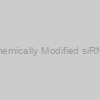 Chemically Modified siRNA |
|
M1254-9 |
Biovision |
each |
EUR 686.4 |
 Chemically Modified siRNA Set C |
|
M1270-1 |
Biovision |
each |
EUR 1024.8 |
 Chemically Modified siRNA Set D |
|
M1271-1 |
Biovision |
each |
EUR 1208.4 |
 Chemically Competent Cell |
|
20-abx098066 |
Abbexa |
-
Ask for price
-
Ask for price
|
|
|
|
 Chemically Competent Cell |
|
abx098066-100l |
Abbexa |
100 µl |
EUR 618.75 |
 Chemically Competent Cell |
|
abx098066-200l |
Abbexa |
200 µl |
EUR 687.5 |
 Chemically Competent Cell |
|
abx098067-100l |
Abbexa |
100 µl |
EUR 675 |
 Chemically Competent Cell |
|
abx098067-200l |
Abbexa |
200 µl |
Ask for price |
 Ar.A4 Chemically Competent Cell |
|
ACC-116 |
Creative BioMart |
10 tubes, 20 tubes, 50 tubes, 100 tubes |
EUR 422.4 |
|
|
|
Description: Agrobacterium Competent Cells |
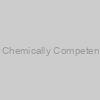 DMT Chemically Competent Cell |
|
20-abx098071 |
Abbexa |
-
Ask for price
-
Ask for price
|
|
|
|
 DB3.1 Chemically Competent Cell |
|
abx098865-1ml |
Abbexa |
1 ml |
EUR 543.6 |
|
|
 DB3.1 Chemically Competent Cell |
|
abx098865-100l |
Abbexa |
100 µl |
EUR 362.5 |
 DB3.1 Chemically Competent Cell |
|
abx098865-200l |
Abbexa |
200 µl |
EUR 425 |
 DMT Chemically Competent Cell |
|
abx098071-100l |
Abbexa |
100 µl |
EUR 618.75 |
 DMT Chemically Competent Cell |
|
abx098071-200l |
Abbexa |
200 µl |
EUR 662.5 |
) Chemically Competent Cell (StrR) |
|
20-abx098064 |
Abbexa |
-
Ask for price
-
Ask for price
|
|
|
|
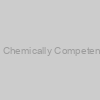 BL21 Chemically Competent Cell |
|
20-abx098105 |
Abbexa |
-
Ask for price
-
Ask for price
-
Ask for price
|
|
|
|
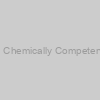 AGL1 Chemically Competent Cell |
|
ACC-105 |
Creative BioMart |
10 tubes, 20 tubes, 50 tubes, 100 tubes |
EUR 318.4 |
|
|
|
Description: Agrobacterium Competent Cells |
 Ar.Qual Chemically Competent Cell |
|
ACC-117 |
Creative BioMart |
10 tubes, 20 tubes, 50 tubes, 100 tubes |
EUR 422.4 |
|
|
|
Description: Agrobacterium Competent Cells |
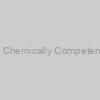 K599 Chemically Competent Cell |
|
ACC-121 |
Creative BioMart |
10 tubes, 20 tubes, 50 tubes, 100 tubes |
EUR 422.4 |
|
|
|
Description: Agrobacterium Competent Cells |
 BL21 Chemically Competent Cell |
|
abx098105-100l |
Abbexa |
100 µl |
EUR 662.5 |
 BL21 Chemically Competent Cell |
|
abx098105-200l |
Abbexa |
200 µl |
EUR 712.5 |
) Chemically Competent Cell (StrR) |
|
abx098064-100l |
Abbexa |
100 µl |
EUR 618.75 |
) Chemically Competent Cell (StrR) |
|
abx098064-200l |
Abbexa |
200 µl |
EUR 675 |
 C58C1 Chemically Competent Cell |
|
ACC-119 |
Creative BioMart |
10 tubes, 20 tubes, 50 tubes, 100 tubes |
EUR 422.4 |
|
|
|
Description: Agrobacterium Competent Cells |
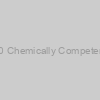 TOP10 Chemically Competent Cell |
|
ACC-129 |
Creative BioMart |
10 tubes, 20 tubes, 50 tubes, 100 tubes |
EUR 318.4 |
|
Description: Agrobacterium Competent Cells |
 Stbl3 Chemically Competent Cell |
|
abx098072-100l |
Abbexa |
100 µl |
EUR 675 |
 Stbl3 Chemically Competent Cell |
|
abx098072-1ml |
Abbexa |
1 ml |
Ask for price |
 Stbl3 Chemically Competent Cell |
|
abx098072-200l |
Abbexa |
200 µl |
EUR 737.5 |
 GV3101 Chemically Competent Cell |
|
ACC-100 |
Creative BioMart |
10 tubes, 20 tubes, 50 tubes, 100 tubes |
EUR 318.4 |
|
|
|
Description: Agrobacterium Competent Cells |
 EHA105 Chemically Competent Cell |
|
ACC-103 |
Creative BioMart |
10 tubes, 20 tubes, 50 tubes, 100 tubes |
EUR 318.4 |
|
|
|
Description: Agrobacterium Competent Cells |
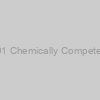 EHA101 Chemically Competent Cell |
|
ACC-108 |
Creative BioMart |
10 tubes, 20 tubes, 50 tubes, 100 tubes |
EUR 318.4 |
|
|
|
Description: Agrobacterium Competent Cells |
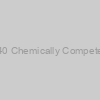 MSU440 Chemically Competent Cell |
|
ACC-118 |
Creative BioMart |
10 tubes, 20 tubes, 50 tubes, 100 tubes |
EUR 422.4 |
|
|
|
Description: Agrobacterium Competent Cells |
 Ar.1193 Chemically Competent Cell |
|
ACC-120 |
Creative BioMart |
10 tubes, 20 tubes, 50 tubes, 100 tubes |
EUR 422.4 |
|
|
|
Description: Agrobacterium Competent Cells |
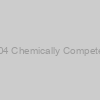 LBA4404 Chemically Competent Cell |
|
ACC-107 |
Creative BioMart |
10 tubes, 20 tubes, 50 tubes, 100 tubes |
EUR 318.4 |
|
|
|
Description: Agrobacterium Competent Cells |
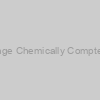 T1 Phage Chemically Comptent Cell |
|
20-abx098070 |
Abbexa |
-
Ask for price
-
Ask for price
-
Ask for price
|
|
|
|
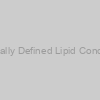 Chemically Defined Lipid Concentrate |
|
EN-CELL-010 |
EnoGene |
5ml |
EUR 30 |
 5 alpha Chemically Competent Cell |
|
20-abx098065 |
Abbexa |
-
Ask for price
-
Ask for price
|
|
|
|
 Chemically Competent Cell) BL21 (DE3) Chemically Competent Cell |
|
20-abx098101 |
Abbexa |
-
Ask for price
-
Ask for price
-
Ask for price
|
|
|
|
) DE3 Chemically Competent Cell (CamR) |
|
20-abx098103 |
Abbexa |
-
Ask for price
-
Ask for price
-
Ask for price
|
|
|
|
 Chemically Competent Cell) BL21 (DE3) Chemically Competent Cell |
|
abx098101-100l |
Abbexa |
100 µl |
EUR 662.5 |
 Chemically Competent Cell) BL21 (DE3) Chemically Competent Cell |
|
abx098101-200l |
Abbexa |
200 µl |
EUR 712.5 |
) DE3 Chemically Competent Cell (CamR) |
|
abx098103-100l |
Abbexa |
100 µl |
EUR 675 |
) DE3 Chemically Competent Cell (CamR) |
|
abx098103-200l |
Abbexa |
200 µl |
EUR 725 |
 5 alpha Chemically Competent Cell |
|
abx098065-100l |
Abbexa |
100 µl |
EUR 618.75 |
 5 alpha Chemically Competent Cell |
|
abx098065-200l |
Abbexa |
200 µl |
EUR 675 |
) Blue Chemically Competent Cell (TetR) |
|
20-abx098068 |
Abbexa |
-
Ask for price
-
Ask for price
|
|
|
|
) Blue Chemically Competent Cell (TetR) |
|
abx098068-100l |
Abbexa |
100 µl |
EUR 618.75 |
) Blue Chemically Competent Cell (TetR) |
|
abx098068-200l |
Abbexa |
200 µl |
EUR 687.5 |
 Chemically Competent Cell) AGL1 (pSoup) Chemically Competent Cell |
|
ACC-106 |
Creative BioMart |
10 tubes, 20 tubes, 50 tubes, 100 tubes |
EUR 318.4 |
|
|
|
Description: Agrobacterium Competent Cells |
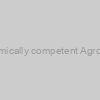 AGL1 chemically competent Agrobacterium |
|
1083-10 |
Intact Genomics |
10x50µl |
EUR 264 |
 K599 Chemically Competent Agrobacterium |
|
1087-06 |
Intact Genomics |
6x50µl |
EUR 260 |
 K599 Chemically Competent Agrobacterium |
|
1087-18 |
Intact Genomics |
18x50µl |
EUR 580 |
 *Human sc-tPA Chemically Inactivated |
|
IHUSCTPACMIN100UG |
Innovative research |
each |
EUR 443 |
|
|
|
Description: *Human sc-tPA Chemically Inactivated |
 *Human sc-tPA Chemically Inactivated |
|
IHUSCTPACMIN1MG |
Innovative research |
each |
EUR 3684 |
|
|
|
Description: *Human sc-tPA Chemically Inactivated |
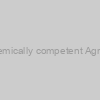 C58C1 Chemically competent Agrobacterium |
|
1086-10 |
Intact Genomics |
10x50µl |
EUR 264 |
 Chemically Competent Cell) GV3101 (pSoup) Chemically Competent Cell |
|
ACC-101 |
Creative BioMart |
10 tubes, 20 tubes, 50 tubes, 100 tubes |
EUR 318.4 |
|
|
|
Description: Agrobacterium Competent Cells |
 Chemically Competent Cell) EHA105 (pSoup) Chemically Competent Cell |
|
ACC-104 |
Creative BioMart |
10 tubes, 20 tubes, 50 tubes, 100 tubes |
EUR 318.4 |
|
|
|
Description: Agrobacterium Competent Cells |
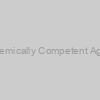 MSU440 Chemically Competent Agrobacterium |
|
1077-06 |
Intact Genomics |
6x50µl |
EUR 284 |
 MSU440 Chemically Competent Agrobacterium |
|
1077-18 |
Intact Genomics |
18x50µl |
EUR 604 |
 GV3101 chemically competent Agrobacterium |
|
1082-10 |
Intact Genomics |
10x50µl |
EUR 264 |
 EHA105 Chemically competent Agrobacterium |
|
1084-10 |
Intact Genomics |
10x50µl |
EUR 264 |
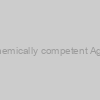 LBA4404 Chemically competent Agrobacterium |
|
1085-10 |
Intact Genomics |
10x50µl |
EUR 264 |
 DH10B Chemically Competent Cells - 12x50µl |
|
1011-12 |
Intact Genomics |
12/PK |
EUR 125 |
|
Description: Intact Genomics ig™ 10B chemically competent cells (E. coli) are suitable for high efficiency transformation in a wide variety of applications such as cloning and sub-cloning. This derivative of DH10B provides the highest efficiency in the industry.Product Includes:ig™ 10B competent cellspUC19 control DNARecovery medium |
 DH10B Chemically Competent Cells - 24x50µl |
|
1011-24 |
Intact Genomics |
24/PK |
EUR 205 |
|
Description: Intact Genomics ig™ 10B chemically competent cells (E. coli) are suitable for high efficiency transformation in a wide variety of applications such as cloning and sub-cloning. This derivative of DH10B provides the highest efficiency in the industry.Product Includes:ig™ 10B competent cellspUC19 control DNARecovery medium |
 DH10B Chemically Competent Cells - 6x100µl |
|
1012-12 |
Intact Genomics |
6/PK |
EUR 115 |
|
Description: Intact Genomics ig™ 10B chemically competent cells (E. coli) are suitable for high efficiency transformation in a wide variety of applications such as cloning and sub-cloning. This derivative of DH10B provides the highest efficiency in the industry.Product Includes:ig™ 10B competent cellspUC19 control DNARecovery medium |
 DH10B Chemically Competent Cells - 6x200µl |
|
1014-24 |
Intact Genomics |
6/PK |
EUR 165 |
|
Description: Intact Genomics ig™ 10B chemically competent cells (E. coli) are suitable for high efficiency transformation in a wide variety of applications such as cloning and sub-cloning. This derivative of DH10B provides the highest efficiency in the industry.Product Includes:ig™ 10B competent cellspUC19 control DNARecovery medium |
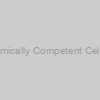 JM109 Chemically Competent Cells - 6x200µl |
|
1062-24 |
Intact Genomics |
200μL |
EUR 149 |
|
Description: Intact Genomics JM109 chemically competent E. coli cells are suitable for high efficiency transformation in a wide variety of applications such as cloning and sub-cloning. |
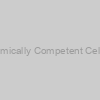 HB101 Chemically Competent Cells - 6x100µl |
|
1071-12 |
Intact Genomics |
100μL |
EUR 99 |
|
Description: Intact Genomics (ig®) HB101 chemically competent E. coli cells are suitable for high-efficiency transformation in a wide variety of applications such as cloning and sub-cloning. E. coli HB101 is a K12 x B hybrid strain, containing the recA13 mutation that minimizes recombination and helps insert stability. In addition, it carries the hsdS20(rB-mB-) restriction minus genotype which prevents cleavage of cloned DNA by endogenous restriction enzymes. HB101 strain does not support Alpha-complementation for blue/white screening |
) DE3 Chemically Comptent Cell (KanR, TetR) |
|
20-abx098104 |
Abbexa |
-
Ask for price
-
Ask for price
|
|
|
|
 DH10B Chemically Competent Cells - 12x100µl |
|
1012-24 |
Intact Genomics |
12/PK |
EUR 195 |
|
Description: Intact Genomics ig™ 10B chemically competent cells (E. coli) are suitable for high efficiency transformation in a wide variety of applications such as cloning and sub-cloning. This derivative of DH10B provides the highest efficiency in the industry.Product Includes:ig™ 10B competent cellspUC19 control DNARecovery medium |
 DH10B Chemically Competent Cells - 24x100µl |
|
1012-48 |
Intact Genomics |
24/PK |
EUR 330 |
|
Description: Intact Genomics ig™ 10B chemically competent cells (E. coli) are suitable for high efficiency transformation in a wide variety of applications such as cloning and sub-cloning. This derivative of DH10B provides the highest efficiency in the industry.Product Includes:ig™ 10B competent cellspUC19 control DNARecovery medium |
 DH10B Chemically Competent Cells - 12x200µl |
|
1014-48 |
Intact Genomics |
12/PK |
EUR 310 |
|
Description: Intact Genomics ig™ 10B chemically competent cells (E. coli) are suitable for high efficiency transformation in a wide variety of applications such as cloning and sub-cloning. This derivative of DH10B provides the highest efficiency in the industry.Product Includes:ig™ 10B competent cellspUC19 control DNARecovery medium |
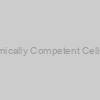 JM109 Chemically Competent Cells - 12x200µl |
|
1062-48 |
Intact Genomics |
200μL |
EUR 255 |
|
Description: Intact Genomics JM109 chemically competent E. coli cells are suitable for high efficiency transformation in a wide variety of applications such as cloning and sub-cloning. |
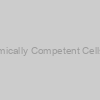 HB101 Chemically Competent Cells - 24x100µl |
|
1071-24 |
Intact Genomics |
100μL |
EUR 315 |
|
Description: Intact Genomics (ig®) HB101 chemically competent E. coli cells are suitable for high-efficiency transformation in a wide variety of applications such as cloning and sub-cloning. E. coli HB101 is a K12 x B hybrid strain, containing the recA13 mutation that minimizes recombination and helps insert stability. In addition, it carries the hsdS20(rB-mB-) restriction minus genotype which prevents cleavage of cloned DNA by endogenous restriction enzymes. HB101 strain does not support Alpha-complementation for blue/white screening |
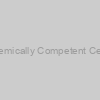 MG1655 Chemically Competent Cells - 12x50µl |
|
1076-12 |
Intact Genomics |
50μL |
EUR 190 |
|
Description: Intact Genomics (ig®) chemically competent MG1655 chemically competent cells are suitable for routine DNA transformation and other research purposes. MG1655 is the “wild type” K-12 strain with minimal genetic manipulation having only been cured of the temperate bacteriophage lambda and F plasmid by ultraviolet light and acridine orange |
 ATCC15834 Chemically Competent Agrobacterium |
|
1075-06 |
Intact Genomics |
6x50µl |
EUR 284 |
 ATCC15834 Chemically Competent Agrobacterium |
|
1075-18 |
Intact Genomics |
18x50µl |
EUR 604 |
) DE3 Chemically Competent Cell (KanR, TetR) |
|
abx098104-100l |
Abbexa |
100 µl |
EUR 675 |
) DE3 Chemically Competent Cell (KanR, TetR) |
|
abx098104-200l |
Abbexa |
200 µl |
Ask for price |
) Blue Chemically Competent Cell (TetR, CamR) |
|
20-abx098069 |
Abbexa |
-
Ask for price
-
Ask for price
|
|
|
|
 pLysS Chemically Competent Cell) BL21 (DE3) pLysS Chemically Competent Cell |
|
20-abx098102 |
Abbexa |
-
Ask for price
-
Ask for price
-
Ask for price
|
|
|
|
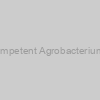 Chemically Competent Agrobacterium Combo Pack |
|
1091-12 |
Intact Genomics |
50μL |
EUR 945 |
|
Description: Intact Genomics Chemically Competent Agrobacterium Combo Pack is perfect for scientists who require multiple agrobacterium competent cell strains for their research. The ElectroCompetent Agrobacterium Combo Pack contains 3 50µl aliquots of GV3101, AGL1, EHA105 and LBA4404 along with pCambia and our proprietary Agro Recovery Media.The GV3101 strain has a C58 chromosomal background with rifampicin resistance and the Ti plasmid pMP90 (pTiC58DT-DNA) with gentamicin resistance. The GV3101 Ti plasmid has the T-DNA region sequences deleted and transformation with a binary vector containing the missing T-region results in a functional T-DNA binary system that allows for transfer of genetic material into a host plant’s genome. Therefore, this system is often used for Agrobacterium-mediated transformation of several dicots such as Arabidopsis thaliana, tobacco, potato, and monocots like corn.The AGL1 strain has a C58 chromosomal background that carries an insertion mutation in its recA recombination gene which stabilizes recombinant plasmids. It also carries rifampicin and carbenicilin resistance in its genome for selection. AGL1 contains the Ti plasmid pTiBO542 from which the T-DNA region sequences have been deleted. Transformation with a binary vector containing the missing T-region results in a functional T-DNA binary system that allows for transfer of genetic material into a host plant’s genome. Therefore, this system is often used for Agrobacterium-mediated transformation of Arabidopsis thaliana as well as maize and other monocots.The LBA4404 strain is useful for transgenic operations of tomatoes, tobacco and other plants. LBA4404 contains a rifampicin resistance gene (rif). LBA4404 strain also contains a octoprine-type Ti plasmid pAL4404 without self-transport function, which contains the vir gene.The EHA105 strain is useful for transgenic operations of rice, tobacco and other plants. EHA105 contains a rifampicin resistance gene (rif). EHA105 strain also contains an amber basic Ti plasmid pEHA105 (pTiBo542DT-DNA) without self-transport function, which contains the vir gene. |
 Chemically Competent Cells - 12x50µl) DL39 (DE3) Chemically Competent Cells - 12x50µl |
|
1061-12 |
Intact Genomics |
12/PK |
EUR 382.8 |
 Chemically Competent Cells - 24x50µl) DL39 (DE3) Chemically Competent Cells - 24x50µl |
|
1061-24 |
Intact Genomics |
24/PK |
EUR 621.6 |
 Chemically Competent Cells - 6x200µl) DL39 (DE3) Chemically Competent Cells - 6x200µl |
|
1064-24 |
Intact Genomics |
200μL |
EUR 465 |
|
Description: Intact Genomics chemically competent DL39 (DE3) E. coli cells are specific for transformation and protein expression in order to uniformly and specifically label :e.g. phenylalanine or leucine residues. DL39 (DE3) can also be used to reduce NMR cross-labeling via transaminase activity for valine, leucine, isoleucine, aspartate, phenylalanine, tyrosine and tryptophan residuesProduct Includes:DL39 (DE3) competent cellspUC19 control DNARecovery medium |
 Chemically Competent Cells - 12x50µl) BL21(DE3) Chemically Competent Cells - 12x50µl |
|
1051-12 |
Intact Genomics |
12/PK |
EUR 120 |
|
Description: Intact Genomics chemically competent BL21(DE3) E. coli cells are suitable for transformation and routine protein expression.Product Includes:BL21 (DE3) competent cellspUC19 control DNARecovery medium |
 Chemically Competent Cells - 24x50µl) BL21(DE3) Chemically Competent Cells - 24x50µl |
|
1051-24 |
Intact Genomics |
24/PK |
EUR 200 |
|
Description: Intact Genomics chemically competent BL21(DE3) E. coli cells are suitable for transformation and routine protein expression.Product Includes:BL21 (DE3) competent cellspUC19 control DNARecovery medium |
 Chemically Competent Cells - 6x200µl) BL21(DE3) Chemically Competent Cells - 6x200µl |
|
1054-24 |
Intact Genomics |
6/PK |
EUR 145 |
|
Description: Intact Genomics chemically competent BL21(DE3) E. coli cells are suitable for transformation and routine protein expression.Product Includes:BL21 (DE3) competent cellspUC19 control DNARecovery medium |
 ig® Stable 2 Chemically Competent Cells |
|
1016-12 |
Intact Genomics |
12x50μl |
EUR 100 |
 ig® Stable 2 Chemically Competent Cells |
|
1016-24 |
Intact Genomics |
24x50μl |
EUR 164 |
 AGL1 Chemically Competent Agrobacterium - 6x50µl |
|
1083-06 |
Intact Genomics |
50μL |
EUR 355 |
|
Description: The AGL1 strain (A. tumefaciens) has a C58 chromosomal background that carries an insertion mutation in its recA recombination gene which stabilizes recombinant plasmids. It also carries rifampicin and carbenicilin resistance in its genome for selection. AGL1 contains the Ti plasmid pTiBO542 from which the T-DNA region sequences have been deleted. Transformation with a binary vector containing the missing T-region results in a functional T-DNA binary system that allows for transfer of genetic material into a host plant’s genome. Therefore, this system is often used for Agrobacterium-mediated transformation of Arabidopsis thaliana as well as maize and other monocots.Product Includes:• AGL1 Chemically Competent cells• pCAMBIA control DNA• Recovery medium |
 Chemically Competent Cells - 6x200µl) JM109(DE3) Chemically Competent Cells - 6x200µl |
|
1063-24 |
Intact Genomics |
200μL |
EUR 149 |
|
Description: Intact Genomics JM109(DE3) chemically competent E. coli cells are suitable for high efficiency transformation in a wide variety of applications such as cloning and sub-cloning. JM109(DE3) is useful for the high-level expression of genes cloned into vectors for expression of sequence downstream from the T7 promoter. |
 Chemically Competent Cells - 12x200µl) BL21(DE3) Chemically Competent Cells - 12x200µl |
|
1054-48 |
Intact Genomics |
12/PK |
EUR 270 |
|
Description: Intact Genomics chemically competent BL21(DE3) E. coli cells are suitable for transformation and routine protein expression.Product Includes:BL21 (DE3) competent cellspUC19 control DNARecovery medium |
 Chemically Competent Cell) GV3101 (pSoup-p19) Chemically Competent Cell |
|
ACC-102 |
Creative BioMart |
10 tubes, 20 tubes, 50 tubes, 100 tubes |
EUR 318.4 |
|
|
|
Description: Agrobacterium Competent Cells |
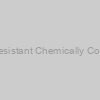 T1 Phage Resistant Chemically Competent Cell |
|
abx098070-100l |
Abbexa |
100 µl |
EUR 650 |
 T1 Phage Resistant Chemically Competent Cell |
|
abx098070-200l |
Abbexa |
200 µl |
EUR 700 |
) Chemically Competent Cell (106 cfu / mu g DNA) |
|
20-abx098067 |
Abbexa |
-
Ask for price
-
Ask for price
|
|
|
|
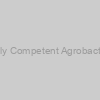 AGL1 Chemically Competent Agrobacterium - 18x50µl |
|
1083-18 |
Intact Genomics |
50μL |
EUR 755 |
|
Description: The AGL1 strain (A. tumefaciens) has a C58 chromosomal background that carries an insertion mutation in its recA recombination gene which stabilizes recombinant plasmids. It also carries rifampicin and carbenicilin resistance in its genome for selection. AGL1 contains the Ti plasmid pTiBO542 from which the T-DNA region sequences have been deleted. Transformation with a binary vector containing the missing T-region results in a functional T-DNA binary system that allows for transfer of genetic material into a host plant’s genome. Therefore, this system is often used for Agrobacterium-mediated transformation of Arabidopsis thaliana as well as maize and other monocots.Product Includes:• AGL1 Chemically Competent cells• pCAMBIA control DNA• Recovery medium |
 C58C1 Chemically Competent Agrobacterium - 6x50µl |
|
1086-06 |
Intact Genomics |
50μL |
EUR 355 |
|
Description: C58C1 Chemically Competent Agrobacterium cells are optimized for the highest transformation efficiency and are useful for various applications. The chromosomal background of C58C1 is C58. C58 is cured of the Ti plasmid pTiC58 resulting in C58C1. C58C1 Competent cells may be useful for transgenic operations that involve Arabidopsis and other plants. This Agrobacterium strain is streptomycin and rifampicin resistant.Reagents Included:• C58C1 Chemically Competent Agrobacterium• DNA (pCAMBIA1391z, 500 pg/µl)• Recovery medium |
 Chemically Competent Cells - 12x200µl) JM109(DE3) Chemically Competent Cells - 12x200µl |
|
1063-48 |
Intact Genomics |
200μL |
EUR 255 |
|
Description: Intact Genomics JM109(DE3) chemically competent E. coli cells are suitable for high efficiency transformation in a wide variety of applications such as cloning and sub-cloning. JM109(DE3) is useful for the high-level expression of genes cloned into vectors for expression of sequence downstream from the T7 promoter. |
 MSU440 Chemically Competent Agrobacterium- 6x50µl |
|
1077-12 |
Intact Genomics |
50μL |
EUR 355 |
|
Description: Intact Genomics (ig®) MSU440 Chemically Competent Agrobacterium cells are made from a specific strain of Rhizobium rhizogenes (formerly Agrobacterium rhizogenes), Agrobacterium rhizogenes(str R) MSU440 Ri (agropine type). Agrobacterium rhizogenes is a soil-borne gram-negative bacterium that can infect most dicotyledons, a few monocotyledons and some gymnosperms. MSU440 Chemically Competent Agrobacterium are optimized for the highest transformation efficiencies and are useful for transgenic operations of corn, tobacco, wormwood, tea tree and other plants. MSU440 Agrobacterium rhizogenes strain contains agrobacterium-type Ri plasmid and displays streptomycin resistance. |
 GV3101 Chemically Competent Agrobacterium - 6x50µl |
|
1082-06 |
Intact Genomics |
50μL |
EUR 355 |
|
Description: GV3101 strain (A. tumefaciens) has a C58 chromosomal background with rifampicin resistance and the Ti plasmid pMP90 (pTiC58DT-DNA) with gentamicin resistance. The GV3101 Ti plasmid has the T-DNA region sequences deleted and transformation with a binary vector containing the missing T-region results in a functional T-DNA binary system that allows for transfer of genetic material into a host plant’s genome. Therefore, this system is often used for Agrobacterium-mediated transformation of several dicots such as Arabidopsis thaliana, tobacco, potato, and monocots like corn.Product Includes:• GV3101 Chemically cells• pCAMBIA control DNA• Recovery medium |
 EHA105 Chemically Competent Agrobacterium - 6x50µl |
|
1084-06 |
Intact Genomics |
50μL |
EUR 355 |
|
Description: Intact Genomics EHA105 Chemically Competent Agrobacterium cells are optimized for the highest transformation efficiencies which is ideal for applications requiring high transformation efficiencies, such as with cDNA or gDNA library construction. The EHA105 strain is useful for transgenic operations of rice, tobacco and other plants. EHA105 contains a rifampicin resistance gene (rif). EHA105 strain also contains an amber basic Ti plasmid pEHA105 (pTiBo542DT-DNA) without self-transport function, which contains the vir gene.Product Includes:• EHA105 Chemically Competent cells• pCAMBIA control DNA• Recovery medium |
 C58C1 Chemically Competent Agrobacterium - 18x50µl |
|
1086-18 |
Intact Genomics |
50μL |
EUR 755 |
|
Description: C58C1 Chemically Competent Agrobacterium cells are optimized for the highest transformation efficiency and are useful for various applications. The chromosomal background of C58C1 is C58. C58 is cured of the Ti plasmid pTiC58 resulting in C58C1. C58C1 Competent cells may be useful for transgenic operations that involve Arabidopsis and other plants. This Agrobacterium strain is streptomycin and rifampicin resistant.Reagents Included:• C58C1 Chemically Competent Agrobacterium• DNA (pCAMBIA1391z, 500 pg/µl)• Recovery medium |
 DH5-Alpha Chemically Competent Cells - 12x50µl |
|
1031-12 |
Intact Genomics |
12/PK |
EUR 130 |
|
Description: Intact Genomics 5-alpha chemically competent E. coli cells are suitable for high efficiency transformation in a wide variety of applications such as cloning and sub-cloning. ig™ 5-alpha chemically competent cells are at least twice the transformation efficiency of the nearest competitor.Product Includes:ig™ 5-alpha competent cellspUC19 control DNARecovery medium |
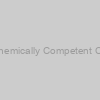 DH5-Alpha Chemically Competent Cells - 24x50µl |
|
1031-24 |
Intact Genomics |
24/PK |
EUR 195 |
|
Description: Intact Genomics 5-alpha chemically competent E. coli cells are suitable for high efficiency transformation in a wide variety of applications such as cloning and sub-cloning. ig™ 5-alpha chemically competent cells are at least twice the transformation efficiency of the nearest competitor.Product Includes:ig™ 5-alpha competent cellspUC19 control DNARecovery medium |
 DH5-Alpha Chemically Competent Cells - 6x100µl |
|
1032-12 |
Intact Genomics |
6/PK |
EUR 120 |
|
Description: Intact Genomics 5-alpha chemically competent E. coli cells are suitable for high efficiency transformation in a wide variety of applications such as cloning and sub-cloning. ig™ 5-alpha chemically competent cells are at least twice the transformation efficiency of the nearest competitor.Product Includes:ig™ 5-alpha competent cellspUC19 control DNARecovery medium |
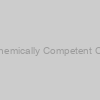 DH5-Alpha Chemically Competent Cells - 6x200µl |
|
1034-24 |
Intact Genomics |
6/PK |
EUR 150 |
|
Description: Intact Genomics 5-alpha chemically competent E. coli cells are suitable for high efficiency transformation in a wide variety of applications such as cloning and sub-cloning. ig™ 5-alpha chemically competent cells are at least twice the transformation efficiency of the nearest competitor.Product Includes:ig™ 5-alpha competent cellspUC19 control DNARecovery medium |
) Chemically Acetylated Bovine Serum Albumin (BSA) |
|
AACX1 |
Cytoskeleton |
2 x 500 µg |
EUR 57.2 |
 MSU440 Chemically Competent Agrobacterium- 18x50µl |
|
1077-36 |
Intact Genomics |
50μL |
EUR 755 |
|
Description: Intact Genomics (ig®) MSU440 Chemically Competent Agrobacterium cells are made from a specific strain of Rhizobium rhizogenes (formerly Agrobacterium rhizogenes), Agrobacterium rhizogenes(str R) MSU440 Ri (agropine type). Agrobacterium rhizogenes is a soil-borne gram-negative bacterium that can infect most dicotyledons, a few monocotyledons and some gymnosperms. MSU440 Chemically Competent Agrobacterium are optimized for the highest transformation efficiencies and are useful for transgenic operations of corn, tobacco, wormwood, tea tree and other plants. MSU440 Agrobacterium rhizogenes strain contains agrobacterium-type Ri plasmid and displays streptomycin resistance. |
 GV3101 Chemically Competent Agrobacterium - 18x50µl |
|
1082-18 |
Intact Genomics |
50μL |
EUR 755 |
|
Description: GV3101 strain (A. tumefaciens) has a C58 chromosomal background with rifampicin resistance and the Ti plasmid pMP90 (pTiC58DT-DNA) with gentamicin resistance. The GV3101 Ti plasmid has the T-DNA region sequences deleted and transformation with a binary vector containing the missing T-region results in a functional T-DNA binary system that allows for transfer of genetic material into a host plant’s genome. Therefore, this system is often used for Agrobacterium-mediated transformation of several dicots such as Arabidopsis thaliana, tobacco, potato, and monocots like corn.Product Includes:• GV3101 Chemically cells• pCAMBIA control DNA• Recovery medium |
 EHA105 Chemically Competent Agrobacterium - 18x50µl |
|
1084-18 |
Intact Genomics |
50μL |
EUR 755 |
|
Description: Intact Genomics EHA105 Chemically Competent Agrobacterium cells are optimized for the highest transformation efficiencies which is ideal for applications requiring high transformation efficiencies, such as with cDNA or gDNA library construction. The EHA105 strain is useful for transgenic operations of rice, tobacco and other plants. EHA105 contains a rifampicin resistance gene (rif). EHA105 strain also contains an amber basic Ti plasmid pEHA105 (pTiBo542DT-DNA) without self-transport function, which contains the vir gene.Product Includes:• EHA105 Chemically Competent cells• pCAMBIA control DNA• Recovery medium |
 LBA4404 Chemically Competent Agrobacterium - 6x50µl |
|
1085-06 |
Intact Genomics |
50μL |
EUR 355 |
|
Description: Intact Genomics LBA4404 Chemically Competent Agrobacterium cells are optimized for the highest transformation efficiencies which is ideal for applications requiring high transformation efficiencies, such as with cDNA or gDNA library construction. The LBA4404 strain is useful for transgenic operations of tomatoes, tobacco and other plants. LBA4404 contains a rifampicin resistance gene (rif). LBA4404 strain also contains a octoprine-type Ti plasmid pAL4404 without self-transport function, which contains the vir gene.Product Includes:• LBA4404 Chemically Competent cells• pCAMBIA control DNA• Recovery medium |
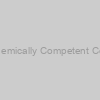 DH5-Alpha Chemically Competent Cells - 12x100µl |
|
1032-24 |
Intact Genomics |
12/PK |
EUR 200 |
|
Description: Intact Genomics 5-alpha chemically competent E. coli cells are suitable for high efficiency transformation in a wide variety of applications such as cloning and sub-cloning. ig™ 5-alpha chemically competent cells are at least twice the transformation efficiency of the nearest competitor.Product Includes:ig™ 5-alpha competent cellspUC19 control DNARecovery medium |
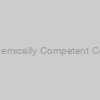 DH5-Alpha Chemically Competent Cells - 24x100µl |
|
1032-48 |
Intact Genomics |
24/PK |
EUR 335 |
|
Description: Intact Genomics 5-alpha chemically competent E. coli cells are suitable for high efficiency transformation in a wide variety of applications such as cloning and sub-cloning. ig™ 5-alpha chemically competent cells are at least twice the transformation efficiency of the nearest competitor.Product Includes:ig™ 5-alpha competent cellspUC19 control DNARecovery medium |
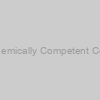 DH5-Alpha Chemically Competent Cells - 12x200µl |
|
1034-48 |
Intact Genomics |
12/PK |
EUR 315 |
|
Description: Intact Genomics 5-alpha chemically competent E. coli cells are suitable for high efficiency transformation in a wide variety of applications such as cloning and sub-cloning. ig™ 5-alpha chemically competent cells are at least twice the transformation efficiency of the nearest competitor.Product Includes:ig™ 5-alpha competent cellspUC19 control DNARecovery medium |
 Ar. A4 Chemically Competent Agrobacterium- 6x50µl |
|
1072-06 |
Intact Genomics |
50μL |
EUR 355 |
|
Description: Intact Genomics (ig®) Ar.A4 Chemically Competent Agrobacterium cells are made from a specific strain of Rhizobium rhizogenes (formerly Agrobacterium rhizogenes), Agrobacterium rhizogenes(kan R) Ar A4 Ri(agropine type). Agrobacterium rhizogenes is a soil-borne gram-negative bacterium that can infect most dicotyledons, a few monocotyledons and some gymnosperms. Ar.A4 Chemically Competent Agrobacterium are optimized for the highest transformation efficiencies and are useful for transgenic operations of corn, tobacco, carrot and other plants. Ar.A4 Agrobacterium rhizogenes strain contains agrobacterium-type Ri plasmid and displays kanamycin resistance. |
 LBA4404 Chemically Competent Agrobacterium - 18x50µl |
|
1085-18 |
Intact Genomics |
50μL |
EUR 755 |
|
Description: Intact Genomics LBA4404 Chemically Competent Agrobacterium cells are optimized for the highest transformation efficiencies which is ideal for applications requiring high transformation efficiencies, such as with cDNA or gDNA library construction. The LBA4404 strain is useful for transgenic operations of tomatoes, tobacco and other plants. LBA4404 contains a rifampicin resistance gene (rif). LBA4404 strain also contains a octoprine-type Ti plasmid pAL4404 without self-transport function, which contains the vir gene.Product Includes:• LBA4404 Chemically Competent cells• pCAMBIA control DNA• Recovery medium |
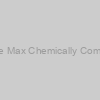 ig® XL1 Blue Max Chemically Competent Cells |
|
1023-12 |
Intact Genomics |
12x50µl |
EUR 100 |
 ig® XL1 Blue Max Chemically Competent Cells |
|
1023-24 |
Intact Genomics |
24x50µl |
EUR 164 |
 Ar. A4 Chemically Competent Agrobacterium- 18x50µl |
|
1072-18 |
Intact Genomics |
50μL |
EUR 755 |
|
Description: Intact Genomics (ig®) Ar.A4 Chemically Competent Agrobacterium cells are made from a specific strain of Rhizobium rhizogenes (formerly Agrobacterium rhizogenes), Agrobacterium rhizogenes(kan R) Ar A4 Ri(agropine type). Agrobacterium rhizogenes is a soil-borne gram-negative bacterium that can infect most dicotyledons, a few monocotyledons and some gymnosperms. Ar.A4 Chemically Competent Agrobacterium are optimized for the highest transformation efficiencies and are useful for transgenic operations of corn, tobacco, carrot and other plants. Ar.A4 Agrobacterium rhizogenes strain contains agrobacterium-type Ri plasmid and displays kanamycin resistance. |
 ATCC15834 Chemically Competent Agrobacterium- 6x50µl |
|
1075-12 |
Intact Genomics |
50μL |
EUR 355 |
|
Description: Intact Genomics (ig®) ATCC15834 Chemically Competent Agrobacterium cells are made from a specific strain of Rhizobium rhizogenes (formerly Agrobacterium rhizogenes), Agrobacterium rhizogenes pRi15834 (agropine type). Agrobacterium rhizogenes is a soil-borne gram-negative bacterium that can infect most dicotyledons, a few monocotyledons and some gymnosperms. ATCC15834 Chemically Competent Agrobacterium are optimized for the highest transformation efficiencies and are useful for transgenic operations of legumes, tobacco, variety of grasses and other plants. ATCC15834 Agrobacterium rhizogenes strain contains pRi15834 agrobacterium-type Ri plasmid and displays resistance to Rifampicin. |
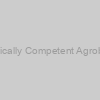 ATCC15834 Chemically Competent Agrobacterium- 18x50µl |
|
1075-36 |
Intact Genomics |
50μL |
EUR 755 |
|
Description: Intact Genomics (ig®) ATCC15834 Chemically Competent Agrobacterium cells are made from a specific strain of Rhizobium rhizogenes (formerly Agrobacterium rhizogenes), Agrobacterium rhizogenes pRi15834 (agropine type). Agrobacterium rhizogenes is a soil-borne gram-negative bacterium that can infect most dicotyledons, a few monocotyledons and some gymnosperms. ATCC15834 Chemically Competent Agrobacterium are optimized for the highest transformation efficiencies and are useful for transgenic operations of legumes, tobacco, variety of grasses and other plants. ATCC15834 Agrobacterium rhizogenes strain contains pRi15834 agrobacterium-type Ri plasmid and displays resistance to Rifampicin. |
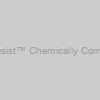 ig® ccdB Resist™ Chemically Competent Cells |
|
1069-12 |
Intact Genomics |
12x50μl |
EUR 108 |
 ig® ccdB Resist™ Chemically Competent Cells |
|
1069-24 |
Intact Genomics |
24x50μl |
EUR 172 |
 pLysS Chemically Competent Cells - 12x50µl) BL21(DE3) pLysS Chemically Competent Cells - 12x50µl |
|
1056-12 |
Intact Genomics |
50μL |
EUR 140 |
|
Description: Intact Genomics (ig®) chemically competent BL21(DE3)pLysS chemically competent cells are suitable for transformation and routine protein expression. The pLysS plasmid produces T7 lysozyme that reduces base level expression of the gene of interest, subsequently allowing for tighter control of expression and is therefore suitable for expression of toxic genes. BL21(DE3)pLysS chemically competent cells also carry the chloramphenicol resistance gene. |
 pLysS Chemically Competent Cells - 12x200µl) BL21(DE3) pLysS Chemically Competent Cells - 12x200µl |
|
1056-48 |
Intact Genomics |
200μL |
EUR 275 |
|
Description: Intact Genomics (ig®) chemically competent BL21(DE3)pLysS chemically competent cells are suitable for transformation and routine protein expression. The pLysS plasmid produces T7 lysozyme that reduces base level expression of the gene of interest, subsequently allowing for tighter control of expression and is therefore suitable for expression of toxic genes. BL21(DE3)pLysS chemically competent cells also carry the chloramphenicol resistance gene. |
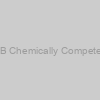 DirectPlate™ 10B Chemically Competent Cells 12x50µl |
|
1015-12 |
Intact Genomics |
50μL |
EUR 129 |
|
Description: Intact Genomics (ig®) DirectPlate™ Competent cells offer simple, fast, and robust results for your DNA transformation needs. DirectPlate™ 10B chemically competent E. coli cells are a perfect choice for researchers looking to simplify their transformation workflow by eliminating heat shock, lengthy incubations, and time-consuming outgrowth procedures. Simply mix and directly plate! DirectPlate™ 10B chemically competent E. coli cells provide higher transformation efficiency than any competitor‘s similar product and are suitable for high-efficiency transformation in a wide variety of applications such as cloning and sub-cloning.Product Includes:DirectPlate™ 10B Chemically Competent CellspUC19 control DNA |
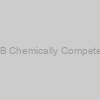 DirectPlate™ 10B Chemically Competent Cells 36x50µl |
|
1015-36 |
Intact Genomics |
50μL |
EUR 315 |
|
Description: Intact Genomics (ig®) DirectPlate™ Competent cells offer simple, fast, and robust results for your DNA transformation needs. DirectPlate™ 10B chemically competent E. coli cells are a perfect choice for researchers looking to simplify their transformation workflow by eliminating heat shock, lengthy incubations, and time-consuming outgrowth procedures. Simply mix and directly plate! DirectPlate™ 10B chemically competent E. coli cells provide higher transformation efficiency than any competitor‘s similar product and are suitable for high-efficiency transformation in a wide variety of applications such as cloning and sub-cloning.Product Includes:DirectPlate™ 10B Chemically Competent CellspUC19 control DNA |
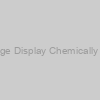 ig® ER2738 Phage Display Chemically Competent Cells |
|
1017-12 |
Intact Genomics |
6x100µl |
EUR 124 |
 ig® ER2738 Phage Display Chemically Competent Cells |
|
1017-24 |
Intact Genomics |
12x100µl |
EUR 208 |
Wykazano, że metodologie wibracyjne mają duży potencjał w zakresie systematycznego gromadzenia danych o ekosystemach, a uzyskaną zmienność filogenetyczną można dobrze wyjaśnić składem biochemicznym pyłku. Spośród siedmiu testowanych metod, najlepsze zróżnicowanie taksonomiczne pyłku uzyskano przy pomocy pomiarów w podczerwieni na próbkach zbiorczych, a także pomiarów obszaru korpusu ziarna pyłku metodą mikrospektroskopii Ramana. Pomiary mikrospektroskopii ramanowskiej wskazują, że obszar pomiarowy, jak również głębia ostrości, mogą mieć decydujący wpływ na otrzymane dane.


